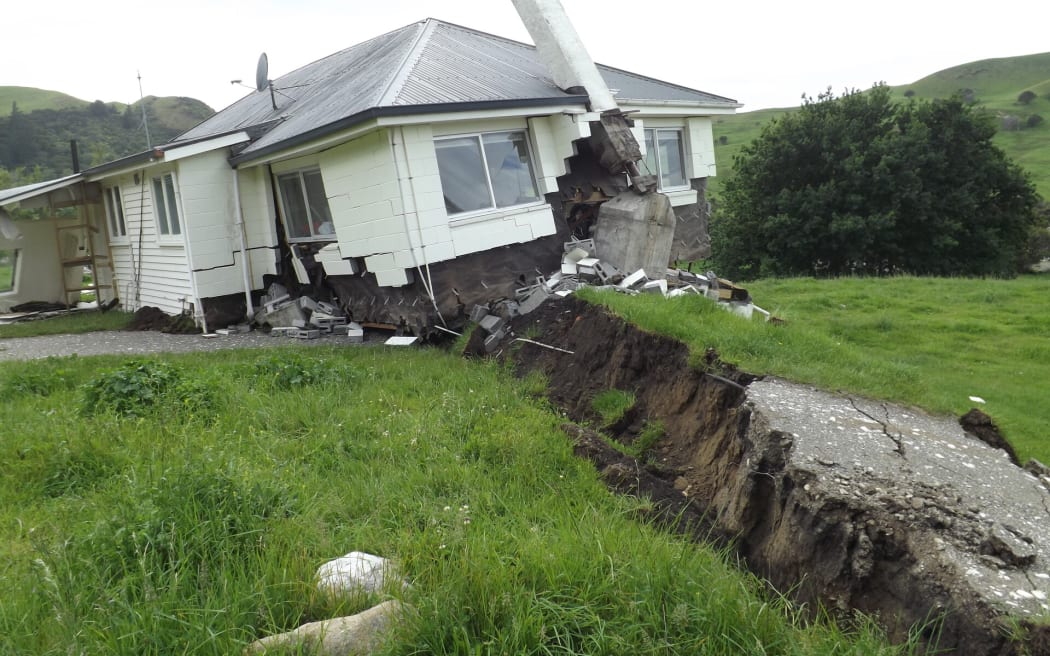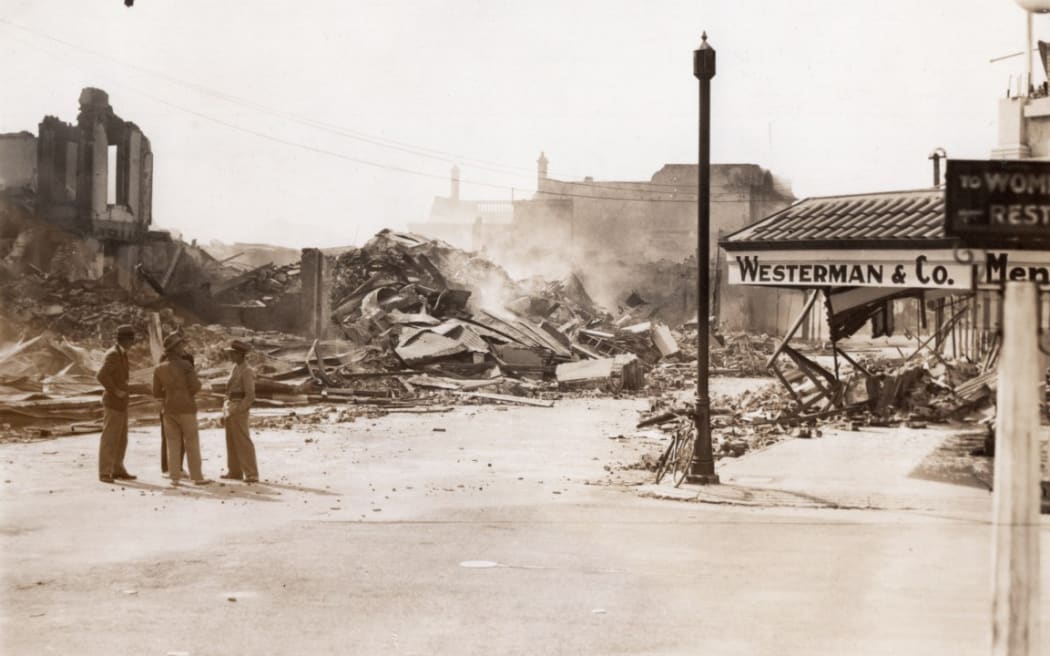
Damage to a building, that has since been demolished, following rupture on the Kekerengu Fault during the 2016 Kaikoura Earthquake Photo: Nicola Litchfield, EQC / GNS Science
This story has been corrected. The dates of the Canterbury earthquakes have been corrected to 2010 and 2011. The story originally stated 2020 and 2021.
There are faultlines throughout Aotearoa, and despite the focus on the 'big three' - the Alpine fault, the subduction zone off the east coast of the North Island, and Wellington - there is a chance of earthquakes all over the country, according to a leading scientist.
Research indicates there is a 75 percent probability of an Alpine Fault earthquake occurring in the next 50 years, and there is a four out of five chance that it will be of magnitude 8 or higher.

Graham Leonard Photo: Jeff McEwan, Capture Studios
GNS principal scientist Graham Leonard told Susie Ferguson on Saturday Morning that low risk didn't mean no risk.
He said scientists agreed there was a "top four" places most at risk of earthquakes in New Zealand: the Alpine Fault; the subduction zone off the North Island (our the biggest fault, and the one which could also produce a large tsunami); the Wellington region - and everywhere else.
"We kind of forget to talk about that - there are faults throughout the country and a chance of shaking all over.
"When you add up all those other fault lines, the chance of the next earthquake is probably greatest in those other ones, outside of those 'big three' areas."
He told Ferguson that although regions such as Auckland and Otago were thought to be at low risk of a quake, it could happen anywhere, and it was "probably better to think about high, very high, and very, very high" risk.
Before the Canterbury quakes of 2010 and 2011, there had been a 1 percent chance of a quake happening there within 50 years.
"But it happened, and we saw the consequences: they were physically destructive, very expensive, very disruptive for people, for more than a decade, so we need to be ready for those in other places, away from the 'big three'."
The Alpine Fault was clearly visible to anyone flying over the South Island. It has been suggested that it was the longest straight line on Earth - and was central to this country's contribution to the global study of plate tectonics, he said.
Harold Wellman, a British geologist living in New Zealand, had observed in the 1940s that the rocks in Nelson were the same as those in Fiordland, yet hundreds of kilometres apart. "They had to have slid apart, and this heavily contributed to the understanding that plate tectonics happened."

The Napier earthquake in 1931 led to the introduction of improved building codes. Photo: Duncan Miller Gallery
Could a rupture of the Alpine fault impact our volcanoes, such as Taranaki mounga?
There was a slight interaction or "small signal" between faults and volcanoes, he said, and there were some faults that went through Taranaki, he said.
"We'd be worried about those - for the magma system but also for the strength of the mountain."
Given the risk of quakes was widespread, how could we manage risk at home?
You might consider your home's construction - many New Zealand homes were built from timber, which was very strong, but the foundations needed to be strong too and the house well-secured to those foundations, he said.
Inside, household items needed to be adequately secured so that they didn't fall and cause injuries in the event of a quake. The Earthquake Commission provided sound information.
The best advice was to drop, cover and hold - rather than previous advice to get under a door frame. And if you can't get under a table, just stay where you are and protect your head from falling items.
Major quakes had changed our understanding, he said - the Wairarapa earthquake changed the materials used for housing; the Napier earthquake changed the building code.
Recently, the first private apartments with base isolators were marketed for sale in Wellington.
"The question might be: could all of our buildings be like that? Do we want our buildings to be performing well in earthquakes, and available after? Are we willing to pay that bit extra to have cities that can survive earthquakes, or be easily repairable?"
Finally, are you mad to want to live in Wellington?
"All of New Zealand has some risk - from earthquakes, volcanoes, landslides, and tsunami - but if we choose where to live well, we make good decisions about where we build and how we build, we can have a lot of resilience, we can protect ourselves from that."

